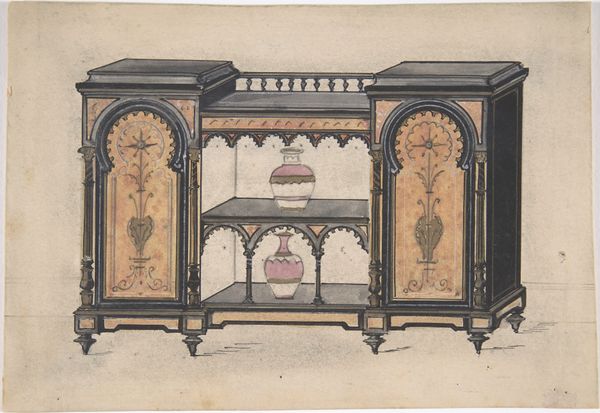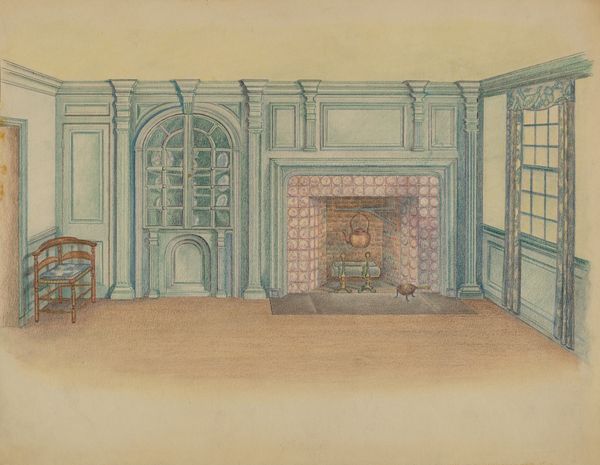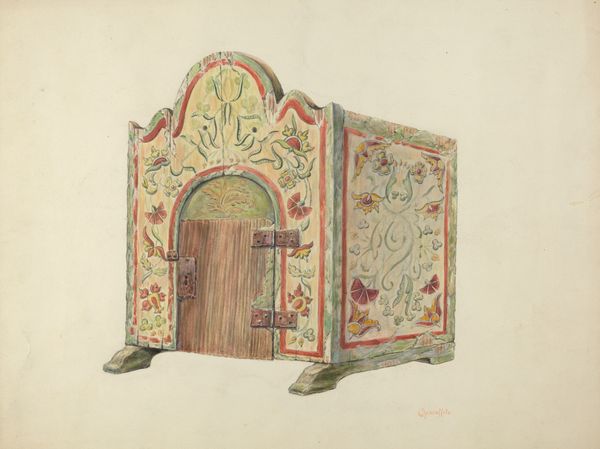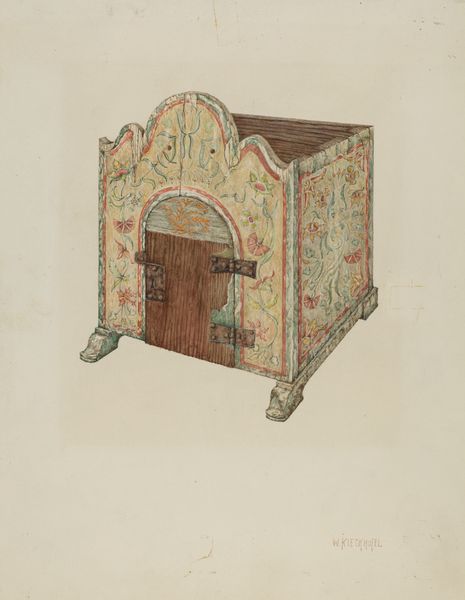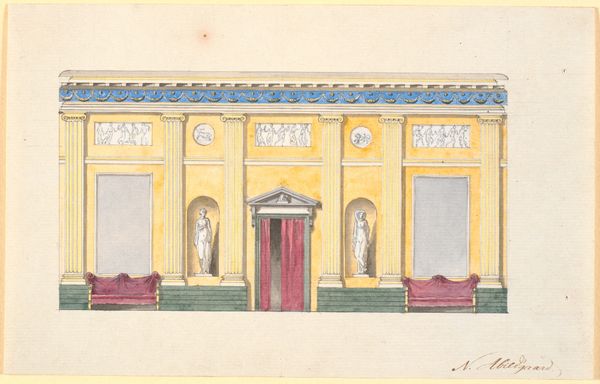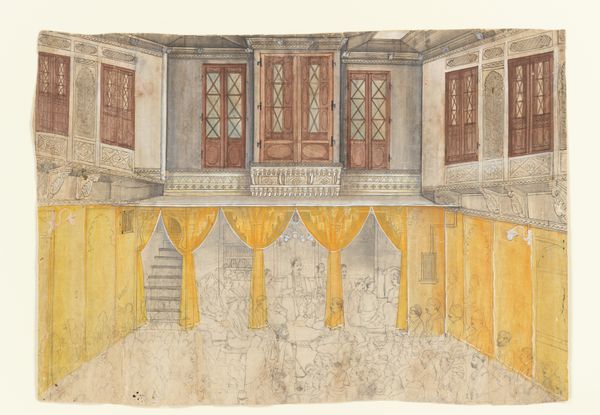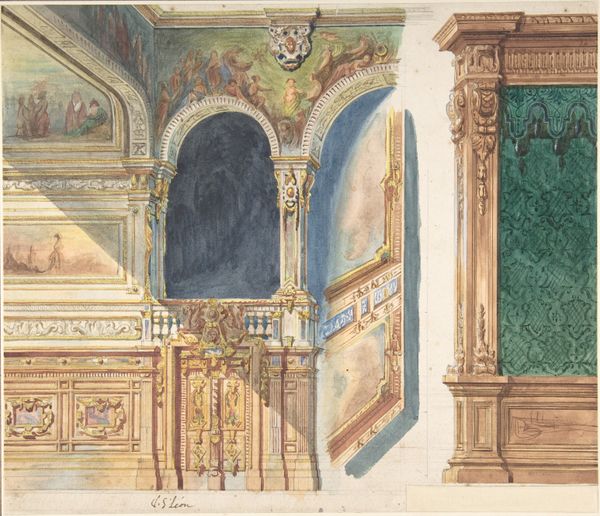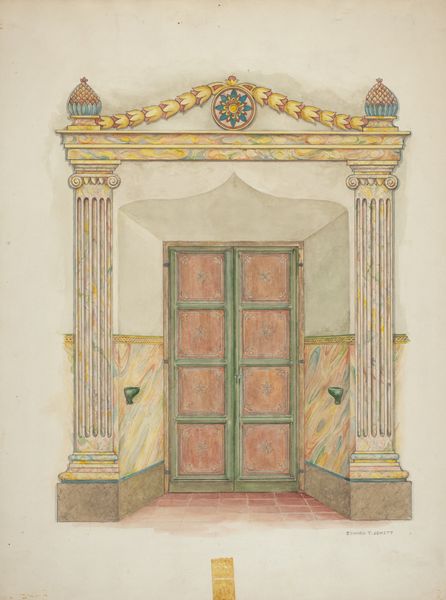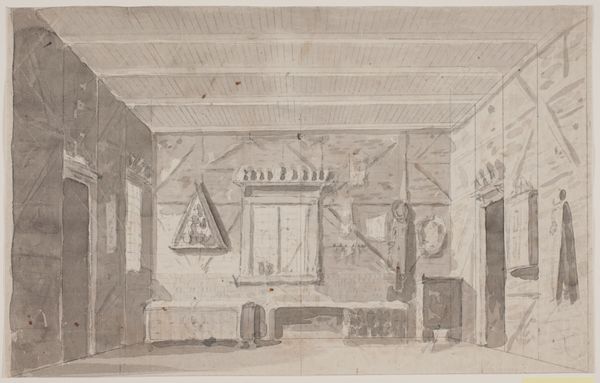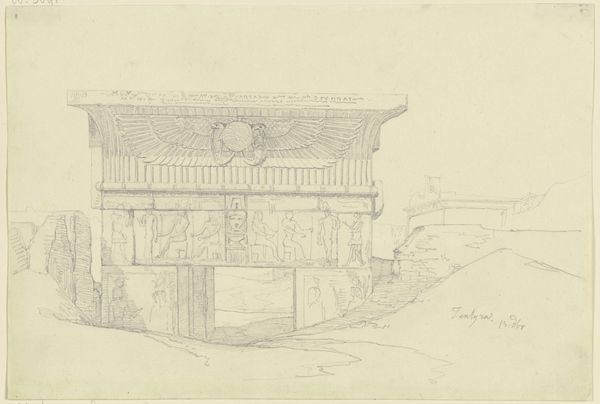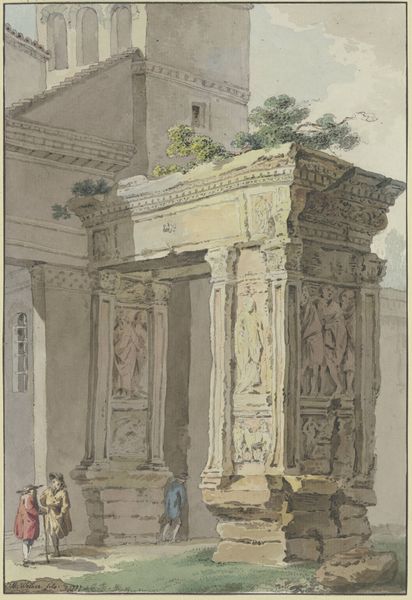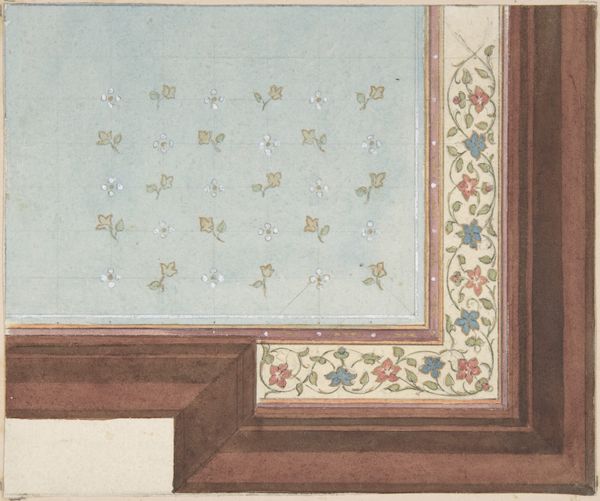
drawing
#
drawing
#
traditional architecture
#
genre-painting
#
northern-renaissance
Dimensions: 220 mm (height) x 281 mm (width) (bladmaal)
Curator: I find this drawing utterly charming! Rørbye's "Painted Cupboard, Dated 1727, in a Room from Læsø," created in 1847, gives us a peek into Danish domestic life. Editor: The initial impression is somewhat muted; the washes of color create a soft atmosphere, yet the subject itself—the cupboard—commands a strong, vertical presence. Its construction divides the picture plane. Curator: Absolutely. But consider the broader context: Rørbye, as an artist, positioned himself amidst complex questions of Danish national identity. His focus on this domestic space, complete with folk art like this cupboard, can be seen as an embrace of regional culture and a push back against centralized authority in favor of a more nuanced, decentralized vision of nationhood. Editor: That's a valid interpretation, but from a strictly formal standpoint, observe the drawing’s architectural structure. The cupboard becomes a focal point through its elaborate, almost baroque ornamentation, contrasting with the spare simplicity of the room’s other furnishings, a dialectic established. Semiotically the numbers become symbols referencing both historical time but alluding toward Rørbye’s personal past. Curator: Precisely, these painted cabinets weren’t just functional, but rather expressions of identity. They are assertions of community membership and often were handed down through generations of women. Rørbye documented how rural women asserted agency and belonging using their own vernacular traditions when confronted with encroaching metropolitan fashions. Editor: Yes, that interplay between functionality and representation is a central tension. And yet, the artist uses thin washes of pigment giving the whole picture an ethereal, insubstantial, quality. How much is romantic projection onto simpler folk ways and the life affirming and celebratory decoration on the cabinets? Curator: A healthy skepticism is warranted. Nonetheless, it's clear that Rørbye saw something valuable in this room, a kind of aesthetic integrity and resilience in a specific Danish identity rooted in local artistic traditions from women creating their own individual yet recognizable and culturally specific language through a vernacular artistic vocabulary. Editor: Ultimately, regardless of intention, this drawing presents an intriguing play of planes, light, and form—a moment frozen where art offers access to lives, and craft, and aesthetics are inseparable from daily rituals. Curator: And the cabinet in all its colorful ornamentation represents a lineage of resistance, resilience and local Danish pride still visible through the passage of time.
Comments
No comments
Be the first to comment and join the conversation on the ultimate creative platform.
